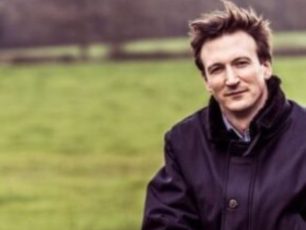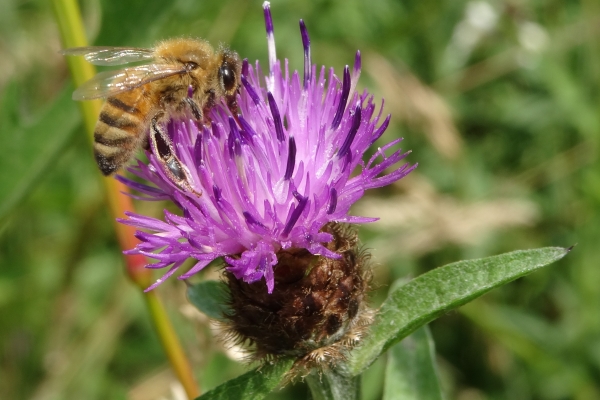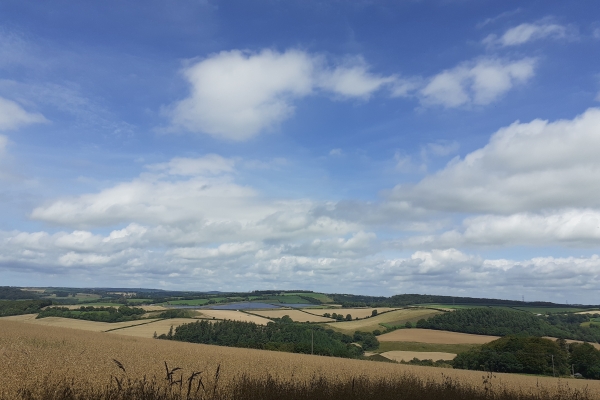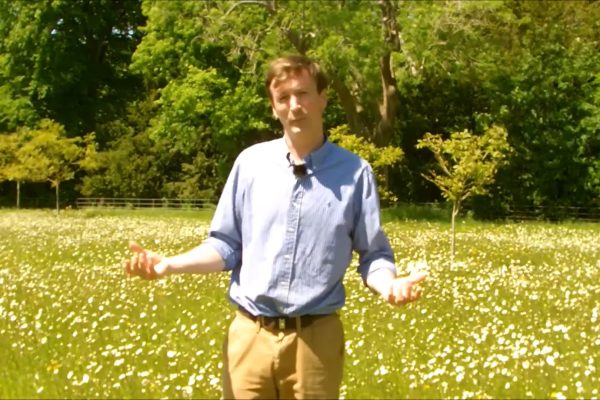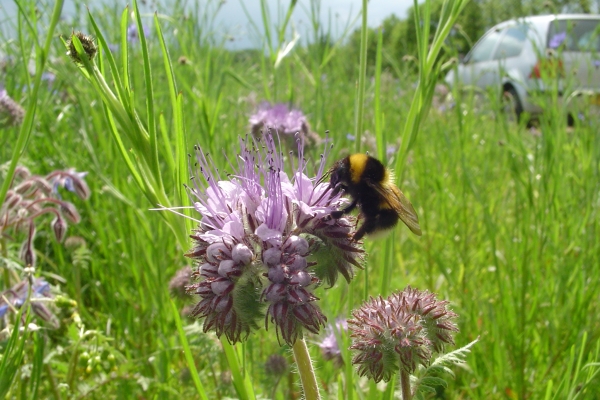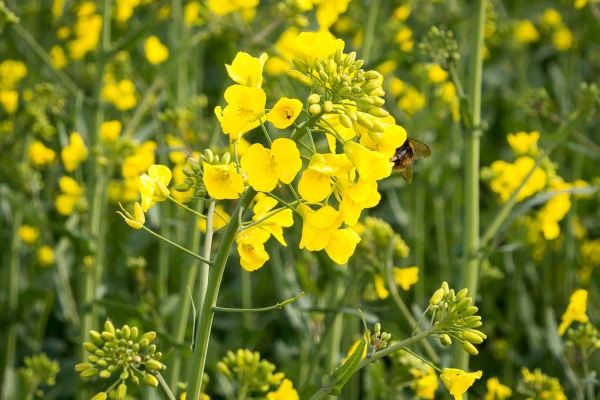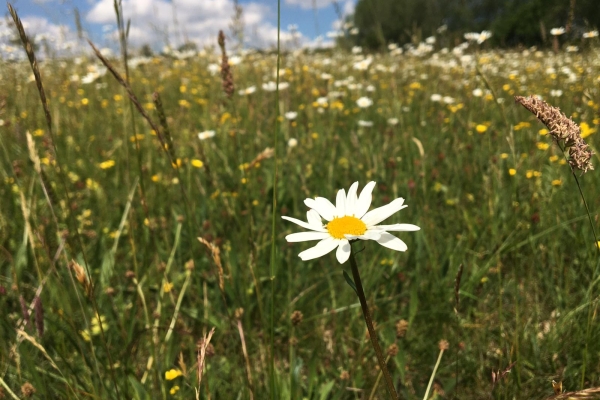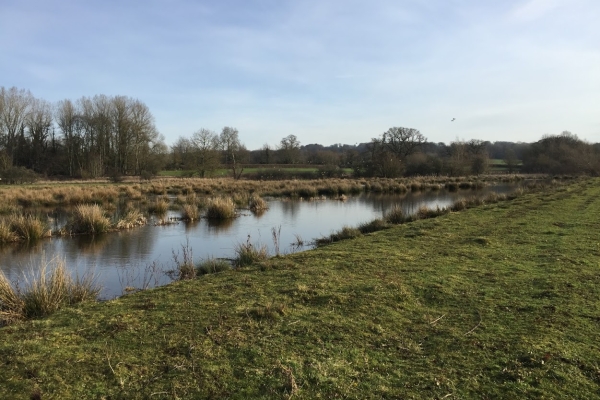Pollinators & pesticides: A review of the evidence
Our greatest ecological service
What is the greatest ecological service provided in nature? Pollination must be up there, particularly for agriculture. Yet there are multiple anthropogenic influences on pollinator success – and struggles – many of which are in the hands of farmers.
Land use change, monocultures and the loss of habitat are all partly attributable to pollinator decline. Conversely flower rich habitats, diversified cropping systems, organic farming, and initiatives like the B-lines Project and Operation Pollinator, are all good ways for productive agricultural systems to support pollinators. However attention is more often drawn to the damage of pesticides – specifically neonicotinoids – and rightly or wrongly this continues to grab the headlines.
Last week Dr Alastair Leake, Agricology Executive Board member, had the challenge of chairing a session presenting the latest research results on pollinators and pesticides by independent scientists from a range of institutions. Representatives from the crop protection industry were also on hand to give their perspectives on behalf of the sector. A captivated audience contributed to a lively debate.
The impact of pesticides on pollinators
So what were the stand-out messages? Dr Lynn Dicks presented the first ever assessment of pollinators by the Intergovernmental Science-Policy Platform on Biodiversity and Ecosystem Services (IPBES). There remains conflicting evidence on the impact of neonicotinoids with differences between what is happening in the labs and what is happening in the fields. Bees are actively selecting flowers with no seed treatment, and the impact of this behaviour is compounded where habitat is poor. Julian Little of Bayer Crop Science queried the relative importance of pesticide impact, versus other known causes of pollinator decline, and how difficult it is to identify individual causes due to the complexity of interactions.
Dr Penelope Whitehorn of Stirling University showed evidence from control trials of preferential foraging in apple trees. Results show that less pollen was harvested during fewer visits to flowers from trees with neonicotinoid treatments than those without. The resulting crop showed less successful pollination. The impairment of short term memory and rate of learning in bumblebees were cited as possible contributory factors.
However, Dr Whitehorn described Swedish field studies which have found that while neonicotinoids do impact on diversity, nesting success and reproduction in solitary and bumble bees, and bumble bee colony growth, there were no significant effects on honey bee colony strength. Evidence is growing that the impact of specific neonicotinoids can be attributed to certain scenarios, species and situations. Some combinations have no impact.
Professor Dave Goulson from the University of Sussex presented his research findings, including the persistence of neonicotinoids in soil, waterways, and bioaccumulation in adjacent populations of wild flowers. Neither Professor Goulson nor Dr Peter Campbell of Syngenta was able to explain why greater levels of neonicotinoid are measured in wild flowers than the applied levels in crops, and the possible pathways of transmission are even more unclear. However it was again reinforced that different species (wild, crop or otherwise) appear to take up neonicotinoids at different rates.
Dr Peter Campbell responded to the presentations by demonstrating that correlation does not indicate causation. He showed that a reduction had occurred in the number of honey bee poisoning incidences over the last two decades since neonicotinoids were introduced. Guy Gagen, representing the NFU stated that there had been a 250% increase in autumn foliar insecticide sprays since the suspension of neonics, so it is hard to say if the alternatives are worse, the same or better than those banned, and that there has been a 14% reduction in the area sown to oilseed rape.
The Chairman summed up by saying that we need to reduce agrichemical inputs (whatever they may be), test them rigorously, and most importantly work more closely with our beneficial ecology.
The role of Agricology
And this is where Agricology comes into play. Many of our partners work to support land managers and producers to lessen their chemical inputs, support habitat and develop agricultural systems that are beneficial, both in terms of ecology and profitability. Some of our profiled farmers demonstrate successful farming systems operating with no agrichemical inputs at all. It can be done. As Angela Smith MP noted towards closing, collaboration is the route to finding solutions that work for all farming. Partnership between farmers, advisers and scientists is the foundation for Agricology. This multi-partner approach enables us to present the practical information, knowledge and experience required to produce food within ecological limits, rather than with chemical dependency.
Editor’s note:
You can find lots of useful information in the Agricology resource library to help you reduce your reliance on agro-chemical inputs. Here are some to get you started:
- The GWCT ‘Sustainable control of crop pests’ resource summarises biological control methods for all major UK crops. The document demonstrates how an integrated approach might assist pest reduction and reduce environmental impacts.
- Neonicotinoids – Your essential brief‘ is based on the GWCT’s review of literature and expert opinion to date on the use of neonicotinoids in farming and summarises the impact the use of them has on bees and the larger environment, attempting to provide some quick answers to some complicated questions.
- The ‘Organic Arable Production: Pest & Disease control’ factsheet by the Soil Association provides a brief overview of how to prevent and control pests and diseases in an arable crop using organic methods.
- The LEAF ‘Integrated Pest Management’ video explains the use of IPM in helping to achieve healthy crop growth on farms. The narrator takes us through the combination of IPM techniques and strategies that can be used by farmers to help manage and control pests.
- The ‘Beneficials on Farmland’ guide by GWCT and ADAS describes practical use of ‘SAFE’ principles that can be implemented to encourage beneficial insects and keep pests in check.
- Rothamsted Research’s ‘CROPROTECT’ website and mobile app provides farmers and agronomists with guidance on pest, weed and disease management. It is a particularly relevant resource for alternative approaches to using pesticides.
- The ‘Policies for pollinators’ report produced by the Bee Coalition includes reference to studies of agri-environment schemes that have shown that well-chosen land management options can significantly benefit pollinators and other wildlife.
- The Friends of the Earth report ‘Farming Oilseed Rape without Neonicotinoids‘ reviews non-chemical methods of pest control and advocates combining a range of alternative techniques in an Integrated Pest Management approach, emphasising the wider benefits.
Look out for Tim’s posts on Agricology Instagram next week. As well as focusing on pollinators, he will cover topics such as hedge laying and woodland management, biodiversity, fresh water management, and renewable energy.


